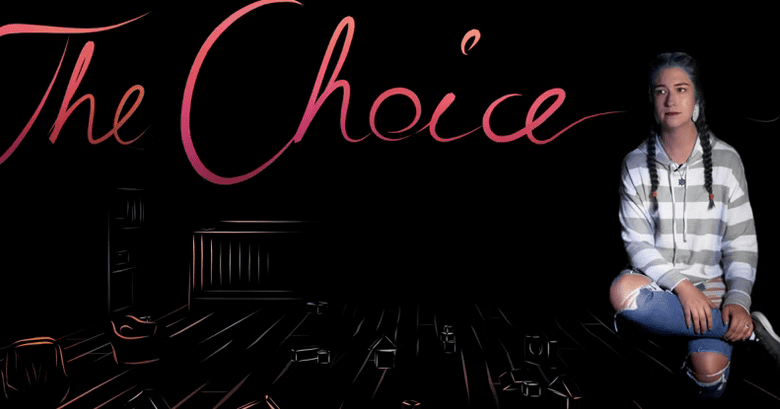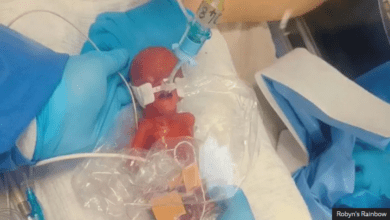Conversation with The Choice VR — Abortion Conversation Projects

An Interview with Joanne Popińska, director of The Choice
By ACP Board Member Abby Minor
“I think I can do something different—something that no one else can do”
I recently had the honor of speaking with Joanne Popińska, a film director and current ACP Grant Partner whose latest project, The Choice, had its world premiere at the International Documentary Film Festival Amsterdam this past November. Popińska’s project combines techniques from traditional documentary storytelling, personal conversations, and animation, using the power of Virtual Reality to bring a special intimacy to abortion storytelling and listening. Right now The Choice is having its North American premiere at the prestigious South by Southwest Festival (SXSW) in Austin, TX in March, I want to share excerpts from our conversation, which challenged me to think about abortion technology and storytelling in new and productive ways.
Abby Minor: I’m a bit of a Luddite and sometimes I’m suspicious of the idea that new digital and media technologies are always improvements. Why Virtual Reality for your project? Why is this an important piece?
Joanne Popinska: Many people ask, can we make a flat documentary; isn’t the story itself very comelling? But what we started to learn—when the viewer is dropped into this virtual space, sitting across from the other person, talking to them and actually choosing the questions, seeing their hands typing the questions—it has a very strong psychological impact on our audience. Unlike traditional documentaries, they don’t feel, oh, I just watched a documentary—they feel, this conversation, this interaction happened to me. We know psychologically that watching a documentary film can make you more knowledgeable, but not necessarily affect your behavior. But talking to someone, simulated by VR, can change your attitude, and your behavior.
AM: Right, so you’ve taken a deep look at the rhetorical effects of Virtual Reality and how it works in this film, and it’s very informed by your own background in psychology and sociology.
We want activists to know that VR is not scary
JP: Yes, I made this film as a sociologist, who understands the power of one-on-one conversations. When you put just two people in a room and let them talk, things happen. That’s the whole idea behind it The Choice. Of course as a filmmaker I want to experience it as art, but I also want to get the message out to activists that VR is a powerful tool. We want activists to know that VR isn’t scary, and it’s not just for geeks and gamers! This is a really important tool for the abortion rights movement. We got a strong reaction from people, anti-abortion people who had a big change of mind and heart.
AM: Another rhetorical choice you made was to highlight the story of Kristen, a Texan who had a very wanted pregnancy and post-term abortion experience. Sometimes in the abortion rights movement, we guard against highlighting more dramatic stories like this, and we talk about how important it is to represent stories that are relatively common and don’t happen. Why did you choose this particular story?
JP: My background in sociology also influenced the story I chose to highlight. At first I started recording interviews in Canada, because I felt I didn’t have to be afraid—unlike every time I visited Poland, even with my progressive friends I was always cautious. Being in Canada allowed me to start and quickly find people willing to tell my story. And then I began to listen to the stories and I realized – they will not convince my listeners. My target audience is people in the middle, not sure what they think and who they should support. My other audience is anti-choice people—if I tell a story about a young woman who wants to finish college, they’ll see her as “selfish.” So those stories aren’t going to be very effective for that audience.
As a sociologist, I began to analyze—what does the debate look like? What questions do people have? What are stereotypes? So for example, one of the stereotypes that I identified is that abortion is against the family. So how do you answer that? I wanted to answer that as a filmmaker—so I knew I had to highlight the story of someone who really wanted to start a family.
I purposely didn’t record an interview with an activist—it’s only natural when you talk about something over and over that you feel like you’re ready. But for non-believers, it starts to sound a little fake. I want people to experience talking to a friend who is telling you his personal story, maybe for the first time.
AM: And in the end you chose to tell someone in the US—
JP: Yes, in the US, as in Canada, the stories we hear include this element of personal choice, but also all the constraints that come with the reality of living in the US So the story we chose for the first chapter is a US story and a second trimester abortion story. I showed this to an activist in Poland a few months ago, and he was like, “oh, but everyone agrees on late term abortion.” But actually it’s not that easy. Kristen, in Texas and at the time, had the right to an abortion, but she faced all kinds of obstacles. She was lied to by her doctors—in Texas they started introducing a bill that would allow doctors to withhold information about fetal anomalies. And because the doctors delayed and delayed, her life was in danger—and all those months of hormones and attachment and—she was really hurt by that experience.
AM: I think about how, in the abortion activism community, we hear so much about how important abortion storytelling is, as if telling abortion stories automatically changes the minds of anti-abortion people. But we’re not really talking about this idea that, actually, not all stories are going to be effective, or different stories are effective for different audiences. If the goal is for people who have had abortions to normalize our own experiences, then telling our stories has value. But if the goal is to change the minds and hearts of a particular audience, then we need to be strategic.
JP: I had the opportunity to see that many anti-choice people are human, they have hearts. So I thought a lot, how can I convince these people? Or maybe not convince, but give them a chance to see the other side. For example, I am a vegan. I realized as a teenager when I was teasing people about not being vegan—that I wasn’t going to get anywhere. My partner, he switched to being vegan because what I cooked for him was delicious! I stopped making him feel guilty about killing animals, and instead showed him a completely different side of being vegan. The analogy with abortion is—my goal is to show people who are anti-abortion or unsure about abortion that pro-choice people and abortion people are people too, they have feelings, and some very deep thoughts. And with Virtual Reality, I think I can do something different—something that no one else can do. As a sociologist, a psychologist, and a virtual reality artist—I think I can give people a chance to deeply experience the other side.
——————————————-
To get updates about The Choice, sign up for the newsletter here.
To support or sponsor this project, visit www.thechoice-vr.com/support
If you have a VR headset (Oculus Quest), keep your eyes open for festival screenings, such as the current one The Choice is having a festival circuit. The closest is SXSW, and there will be an option for in-person and online participation. Find more information on the SXSW 2022 schedule.
Also, Joanne and her team are currently gearing up for an impactful campaign. They plan to visit different states and cities, meet with local activist communities, and discuss how the project can be used for activists’ daily work. You can contact the team if you want to invite them for such a meeting: info@infiniteframemedia.com
Journalists who want to watch The Choice can request a loner headset by mail; contact the team at info@infiniteframemedia.com o press@infiniteframemedia.com





